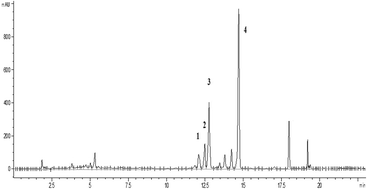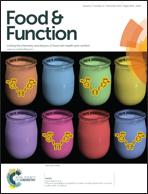Rosa canina L. – new possibilities for an old medicinal herb
Abstract
Health beneficial properties of Rosa canina species are mainly attributed to rose hips, while the leaves are usually discarded as waste. In the present study we investigated chemical constituents as well as antimicrobial and antibiofilm potential of R. canina methanolic leaf extract. Chemical analysis showed that dominant phenolic compounds are quercetin and isorhamnetin derivatives (isoquercetin and isorhamnetin-3-O-rutinoside). Among the tested bacteria, Pseudomonas aeruginosa and Salmonella typhimurium were the most susceptible to the activity of R. canina leaf extract with MIC and MBC values both 0.009 mg mL−1. For most of the bacterial strains investigated the extract showed significantly higher activity compared to the used standard compounds streptomycin and ampicillin. Also the tested extract powerfully inhibited in vitro biofilm growth in Pseudomonas aeruginosa, Staphylococcus aureus, Leishmania monocytogenes and Escherichia coli at sub MIC-levels. With concentrations equal to 1/4 and 1/8 of MIC values biofilm growth of P. aeruginosa and E. coli was inhibited by 90%. The obtained results are significant for a wider and efficient use of R. canina leaves.


 Please wait while we load your content...
Please wait while we load your content...